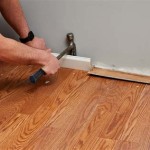How Much Does Wood Tile Flooring Cost?
Wood tile flooring, also known as wood-look tile, has become a popular alternative to traditional hardwood flooring. It offers the aesthetic appeal of wood with the durability and water resistance of tile, making it a suitable option for various areas of a home, including bathrooms, kitchens, and basements. Understanding the costs associated with wood tile flooring is crucial for homeowners planning a renovation project. This article will explore the various factors influencing the cost of wood tile flooring, providing a comprehensive overview to help with budget planning.
The total cost of wood tile flooring is not simply the price of the tile itself. It encompasses material costs, which include the tiles, underlayment, grout, and sealant. Labor costs are another significant factor, varying depending on the installation's complexity and the installer's rates. Additionally, potential subfloor preparation and any necessary demolition of existing flooring can contribute to the overall expense. It is essential to consider all these components to arrive at an accurate cost estimate.
Material Costs: Types of Wood Tile and Associated Prices
The primary factor influencing the material cost of wood tile flooring is the type of tile chosen. Wood-look tile is primarily manufactured from either porcelain or ceramic, each offering distinct characteristics and associated price points.
Porcelain tiles are generally denser and more durable than ceramic tiles. This increased durability makes them suitable for high-traffic areas and areas prone to moisture. Porcelain tiles are fired at higher temperatures, resulting in a harder, less porous surface. This inherent resistance to water absorption contributes to their suitability for bathrooms and kitchens. The cost of porcelain wood-look tile typically ranges from $3 to $10 per square foot, depending on the quality, design, and brand. High-end porcelain tiles with intricate wood grain patterns and textures can exceed this range.
Ceramic tiles, on the other hand, are less dense and more porous than porcelain. While they are still a durable option for flooring, they are generally better suited for areas with less foot traffic and lower moisture exposure. Ceramic wood-look tiles are typically more affordable than porcelain, with prices ranging from $2 to $5 per square foot. The lower cost makes them a budget-friendly option for homeowners looking to achieve the wood-look aesthetic without the higher price tag of porcelain.
Beyond the base material, the size and shape of the tiles also impact the price. Larger format tiles, which can mimic the look of wide-plank hardwood flooring, often cost more per square foot due to the increased material and manufacturing complexity. Similarly, uniquely shaped tiles or those with intricate patterns can also command a higher price. The finish applied to the tile, such as matte, gloss, or textured, can also influence the cost, with specialty finishes often adding to the overall price per square foot. The choice of grout also plays a role; epoxy grout, known for its stain resistance and durability, typically costs more than cementitious grout.
Finally, underlayment is a critical component of wood tile flooring installation. It provides a stable base for the tiles, helps to dampen sound, and can provide thermal insulation. The type of underlayment required depends on the subfloor and the specific tile being installed. Prices for underlayment can range from $0.50 to $2 per square foot. Purchasing a high-quality underlayment is recommended to ensure the longevity and performance of the wood tile flooring.
Labor Costs: Installation Factors and Professional Fees
The labor cost associated with wood tile flooring installation is a significant portion of the overall expense. Installation costs vary depending on several factors, including the complexity of the installation, the condition of the subfloor, and the installer's experience and rates.
The complexity of the installation refers to the layout of the room, the presence of obstacles such as cabinets or plumbing fixtures, and the desired pattern of the tile. Intricate patterns, such as herringbone or chevron, require more time and skill to install correctly, resulting in higher labor costs. Similarly, rooms with unusual shapes or tight corners can also increase the installation time and labor expenses. The size of the tile can also influence the cost; larger tiles generally require less time to install per square foot, but they are also heavier and more difficult to handle, potentially affecting the overall labor cost.
The condition of the subfloor is a significant factor in determining the labor cost. A level and stable subfloor is essential for a successful wood tile flooring installation. If the subfloor is uneven, damaged, or requires repair, additional work will be necessary to prepare it for the tile. Subfloor preparation can include leveling the surface with self-leveling compound, repairing cracks or holes, or even installing a new subfloor entirely. These additional tasks can significantly increase the labor cost of the project. A professional installer will be able to assess the condition of the subfloor and provide an accurate estimate for the necessary preparation work.
Installer rates vary depending on their experience, location, and the specific scope of the project. Generally, experienced and licensed installers charge more than less experienced or unlicensed individuals. However, hiring a qualified installer is crucial to ensure a proper installation and avoid potential issues such as cracking, uneven surfaces, or water damage. It is recommended to obtain multiple quotes from different installers and carefully review their qualifications and references before making a decision. Labor costs for wood tile flooring installation typically range from $4 to $10 per square foot, depending on the factors mentioned above.
It is essential to factor in the cost of removing and disposing of any existing flooring. This can add to the overall labor cost, especially if the existing flooring is difficult to remove or contains hazardous materials such as asbestos. Be sure to discuss the removal process with the installer and obtain a clear estimate for this additional service.
Additional Costs: Subfloor Preparation, Demolition, and Contingency Funds
Beyond the core material and labor costs, several other expenses can contribute to the overall cost of wood tile flooring installation. These include subfloor preparation, demolition of existing flooring, and the allocation of a contingency fund for unforeseen issues.
Subfloor preparation, as previously mentioned, is a crucial aspect of the installation process. A level and stable subfloor is essential for a successful and long-lasting wood tile flooring installation. Depending on the condition of the existing subfloor, various preparation tasks may be required. These can include cleaning and leveling the surface, repairing cracks or holes, and reinforcing the subfloor if necessary. The cost of subfloor preparation can vary significantly depending on the extent of the work required. Simple cleaning and minor leveling may cost only a few dollars per square foot, while more extensive repairs or the installation of a new subfloor can add several dollars per square foot to the overall project cost.
Demolition of existing flooring is another potential expense to consider. The cost of demolition depends on the type of flooring being removed and the difficulty of the removal process. Removing tile, for example, can be more labor-intensive and costly than removing carpet or vinyl flooring. Additionally, if the existing flooring contains hazardous materials such as asbestos, specialized removal procedures and disposal methods will be required, further increasing the cost. The cost of demolition can range from $1 to $5 per square foot, depending on the factors mentioned above. It is important to discuss the demolition process with the installer and obtain a clear estimate for this service, including any associated disposal fees.
Finally, it is always prudent to allocate a contingency fund for unforeseen issues that may arise during the installation process. These issues can include unexpected subfloor damage, hidden plumbing or electrical problems, or delays due to material shortages. A contingency fund of 5% to 10% of the total project cost is generally recommended. This fund can help to cover any unexpected expenses and prevent the project from going over budget. While it is hoped that the contingency fund will not be needed, it provides a valuable buffer against unforeseen problems and helps to ensure a smooth and successful wood tile flooring installation.
In summary, the cost of wood tile flooring is dependent on a multitude of factors. Careful consideration of the types of tiles, the complexity of the installation, and potential unforeseen issues is paramount when estimating the overall expenditure. Consulting with multiple professionals and acquiring comprehensive quotations will provide a more accurate representation of the project's financial undertaking.

Wood Look Tile Vs Which Flooring Is Better Pros And Cons

Wood Look Tile Flooring Styles Installation Costs

Tile Vs Wood Flooring Major Differences Pros Cons And Costs Forbes Home

How Much Does Flooring Installation Cost 2024 Guide

Daltile Baker Wood 6 In X 24 Walnut Glazed Porcelain Floor And Wall Tile 14 55 Sq Ft Case Bk10624hd1pr The Home Depot

Average Hardwood Flooring S In 2024 Forbes Home

Wood Look Tile Vs Which Flooring Is Better Pros And Cons

What Is The Average Cost To Install Tile Floors Rubi Blog Usa

How Much Does Flooring Installation Cost In 2024 Forbes Home

Natural Looking Wooden Floor Wall Tiles At Best Orientbell
Related Posts








